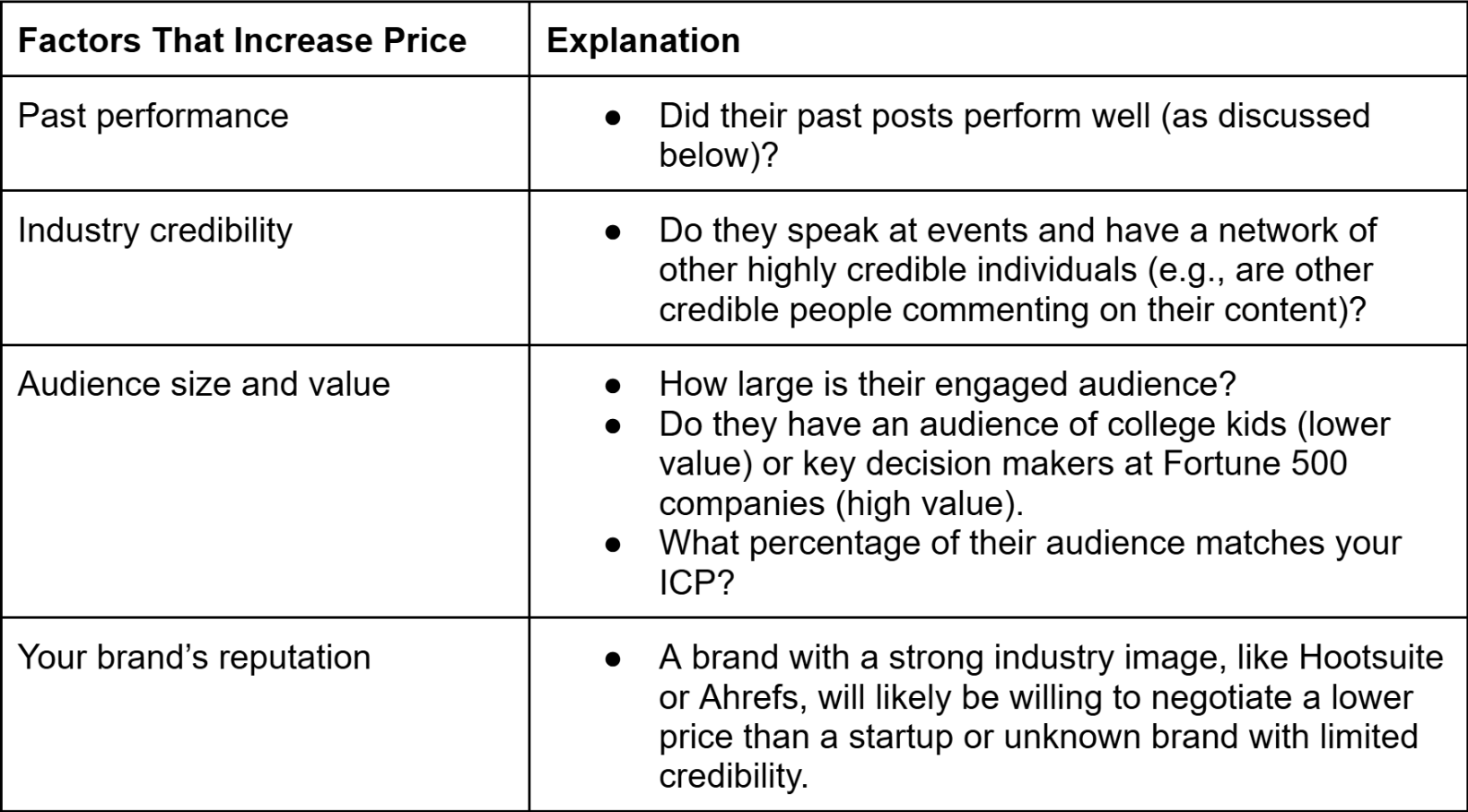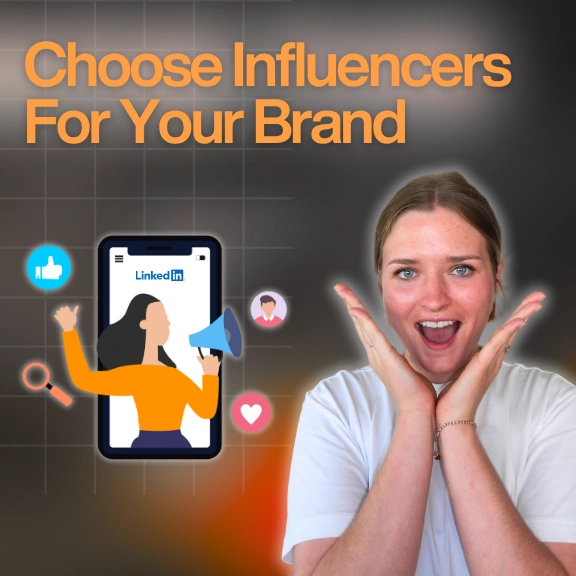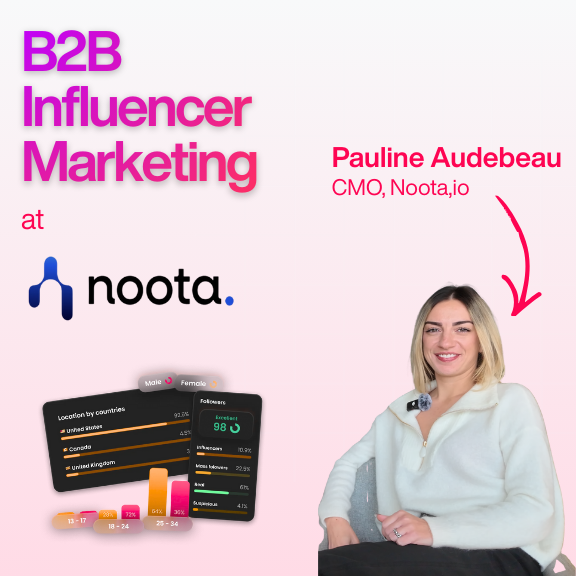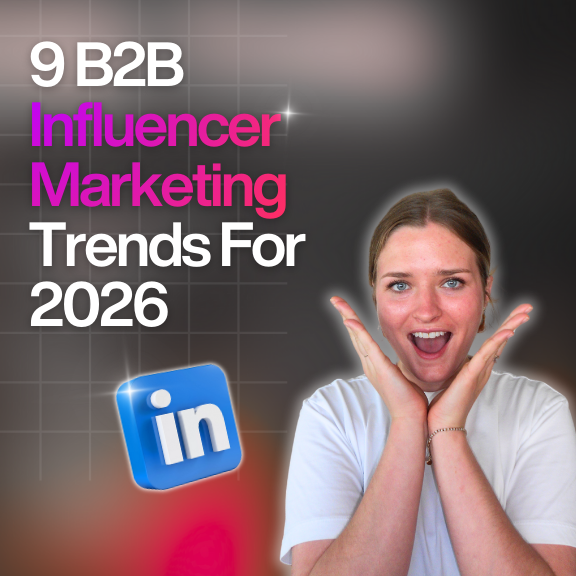Blog & Articles
Your ultimate ressource for the creator economy
Methodology & Rankings
About Favikon, rankings, tools & much more.
Insights
The recipe behind Favikon's viral & coveted rankings.
Free tools to power your influencer marketing workflows.
See Favikon users' success stories.
Get access to all Favikon rankings.
Become a Partner
Become an Affiliate
About the team behind Favikon
The place to talk creator economy, together


Featured Rankings

Here is the Top 50 Rising Video Creators on LinkedIn. Video is quickly becoming the platform’s most powerful format, with creators gaining more reach and engagement than ever. As Gen Z grows its presence and tools like BrandLink and Thought Leader Ads support content creation, LinkedIn is doubling down on video. This ranking, made in partnership with OpusClip, celebrates the creators leading this shift and aims to inspire anyone ready to start sharing through video.

Here is the Top 50 Rising Video Creators on LinkedIn. Video is quickly becoming the platform’s most powerful format, with creators gaining more reach and engagement than ever. As Gen Z grows its presence and tools like BrandLink and Thought Leader Ads support content creation, LinkedIn is doubling down on video. This ranking, made in partnership with OpusClip, celebrates the creators leading this shift and aims to inspire anyone ready to start sharing through video.


Megan Mahoney is an influencer marketer who uses data and real-world case studies to uncover what actually drives results in influencer campaigns. With a background in content marketing and over a decade of experience helping brands grow through strategy and storytelling, she brings a thoughtful perspective to creator partnerships and is deeply engaged in the evolving creator economy.
Check Brand DealsHow to Choose Influencers For Your Brand: Complete Guide
Choosing influencers for your brand is a deceptively tricky task because there isn't a clear "ideal" influencer for a brand.
The ideal influencer depends on the campaign goals, your product, and your customer.
For example, if you have a todo list app, working with large influencers with broad audiences may be most effective, as the app is applicable to a wide range of people.
On the other hand, if you're an emerging startup selling to enterprise brands, you'll likely see a better ROI working with a handful of highly credible influencers with small audiences.
To simplify the task of choosing the right influencers for your brand, we'll discuss:
- The most important factors to consider when choosing influencers.
- What an ideal metric looks like, depending on your campaign goal, product, and ideal customer.
#1: Audience Relevancy
When I asked ten different B2B influencer marketers how they choose influencers, nearly all of them mentioned that they evaluate an influencer’s audience relevancy.
If the influencer’s audience doesn’t match your ICP, it won’t convert.
Alex Llull drove this point home with an example from a friend who hired a generalist with 500,000 followers who drove just three demo signups:

In Jess Cook's post describing Vector's $1.1 million influencer case study, she mentioned that they hired either influencers who perfectly fit Vector's ICP or current Vector customers.

Another benefit of selecting influencers who match your ICP is that you can likely convert the influencers into customers as well.
This is one reason why Slate is particularly picky about exclusively partnering with influencers who match their ICP:

However, just because an influencer matches your ICP doesn't necessarily mean their audience matches your ICP.
If you're running campaigns on LinkedIn, you can use this nifty hack from Obaid Durrani to estimate the percentage of the audience that matches your ICP.

Alternatively, look at the comments to see roughly how many commenters match your ICP.

However, audience relevancy isn't equally important for each campaign.
If you're already a well-established brand in your space and your company's goal is to increase general brand awareness, audience relevancy might be a slightly less important metric.
For example, consider Ahrefs.
It's already a well established product in the SEO space. If you go to an SEO conference, most people have already heard of it.
If Ahrefs continued promoting the product strictly with SEO (and even organic marketing) professionals, they'd never reach new audiences.
Additionally, the product has evolved from an SEO tool to a broader marketing tool, and therefore serves a much broader audience.

Therefore, Ahrefs is running more general brand awareness campaigns with creators like Linus Tech Tips, who have larger, yet slightly less relevant audiences.

Their head of influencer marketing, Igor Gorbenko, noted that even though Linus Tech Tips' audience is slightly less relevant, it has helped Ahrefs reach a new audience and ultimately drive more demos.

So if you're still establishing industry credibility, aim for a high audience ICP match.
However, if you’ve already saturated your niche, it might make sense to include larger influencers in your campaign even if the audience relevancy decreases.


#2: Content and Engagement Quality and Originality
The creators promoting your brand shape your brand image, so you obviously want to ensure the content and engagement are authentic.
Alex Llull of Perspective has a three step process for checking engagement authenticity:

You can manually review each creator's content to assess originality and authenticity, though doing so for each potential creator is time-consuming.
To speed up the process, we created the Authenticity Score so you can quickly weed out low quality creators.

The Authenticity Score takes into account whether or not the content is purely AI-generated, the legitimacy of their engagement, and the creator’s general expertise:

However, after narrowing your list to creators who exclusively publish authentic, high-quality content, don't be afraid to work with creators who have a slightly different tone of voice from your brand.
For example, Sarah Adam of Wix mentioned that she actually prefers creators with a unique voice and message because it helps Wix reach a new audience:

That said, if you're a newer startup still shaping your brand image, start with influencers who align with your brand so you can solidify what your brand stands for before expanding to new audiences.

#3: Engaged Audience Size
I purposefully phrased this as "engaged audience size" because follower count does not accurately portray the approximate number of people a sponsored post with a creator will reach.
This is because our study of 100 LinkedIn creators showed that the correlation between total follower count and average engagement per post is very weak.

Therefore, I measure engaged audience size by average total engagement per post rather than total followers.
To find creators who meet your desired average engagement per post on any platform, you can use the filters in Favikon:

However, what is the total engaged audience size you should target?
The answer to this question is complex.
Most mature influencer programs work with a variety of both micro and macro influencers.
However, if you're just starting your influencer program, the short answer is to start with micro influencers.
Micro influencers give you a chance to test different messages and influencers at a relatively low cost to learn what resonates with your audience before scaling to larger influencers.
There are also a variety of unique benefits of micro influencers.
Akshaya Chamdramouli of Storylane claims micro influencers drive a better ROI for Storylane because:
- Micro influencers often have a higher ICP match.
- Micro influencers typically work harder and bring fresh ideas to the table.

Jess Cook also found that micro influencers drove an impressive ROI.
In fact, our case study on Vector's influencer strategy showed that the average engagement per influencer was only about 111 per post (that's average total likes, comments, and reposts on the creator's organic posts).

Another benefit of micro influencers that Igor of Ahrefs mentioned is that they help you earn more mentions across the web, which can translate into better LLM visibility.

He also mentioned that, coincidentally, the product Ahrefs promotes in its influencer campaigns is the one that appears most frequently in LLM answers.

Ash Turner of Synthesia also believes a key benefit of micro influencers is that they allow you to target a very specific audience segment and therefore reduce audience overlap:

However, Synthesia also works with macro influencers as well.

To expand on Ash’s point, macro influencers can be excellent if you have a mature brand with a broad ICP and a mature influencer program where you’ve already identified what influencers and messages resonate with your audience.
Macro influencers are also useful for pushing prosumer and low cost products that people might purchase on impulse.
For example, Anthropic checked all of these boxes, and in our case study covering their influencer marketing program, you’ll see that they used primarily larger influencers (over 50,000 followers):

Additionally, macro influencers typically charge less per engaged audience member relative to micro influencers simply because they realize that as their audience broadens, the ICP audience match decreases for most brands.

However, if you are one of the few brands with a very broad audience (e.g., a todo list app or even a tool like Claude) and the majority of that macro influencer’s audience is relevant, you can leverage this lower price per engaged audience member to generate a better ROI.
This is something that Igor Gorbenko noticed.

As you can see, there are a lot of factors to consider when deciding whether you should work with micro or macro influencers, so use this chart to help you identify the best solution:

#4: Industry Credibility and Experience
Many creators earn followers for meme and humor related content, though that doesn't necessarily mean the audience trusts or views the creator as a credible expert.
For example, Jeremy Barbara of doola discusses the concept of content led versus creator led marketing.
He hired several influencers who had great content, views, and engagement, but the audience enjoyed the content but didn’t necessarily know or trust the creator.

Below is an excellent example of the concept of content led growth.
This person works at a reputable company and actually has extensive experience as a social media marketer.
However, this person’s content doesn’t reflect their experience or provide any insight into them as a person.

Therefore, they don’t have much credibility tied to their personal brand and many of their sponsored posts didn’t perform very well relative to their organic content (from an engagement perspective).
That said, industry credibility isn’t equally important for every campaign.
If you’re selling a prosumer or low priced product that isn’t a considered purchase, you don’t necessarily need an industry expert promoting it. As long as the content the creator produces aligns with their organic content tone, that creator may still drive conversions.
For example, if you’re selling a todo list app that’s $10 per month, people will purchase it if they can see that it’s useful, because it’s not a highly considered purchase.
On the other hand, if someone is buying cybersecurity software, the credibility of the source recommending the software is more important, because it's a highly considered purchase, and the consequences are much higher if the software doesn't perform as advertised.

#5: Price
While we believe that creators deserve to be paid well, price ultimately is a factor you need to consider when choosing creators.
If you have two campaigns with identical performance, but you paid Creator A $500 and Creator B $1,000, the campaign with Creator A ultimately produced double the ROI of Creator B.

Therefore, ask for quotes from a variety of influencers who match the criteria for your brand and campaign (per the criteria above) and then compare prices.

#6: Historical Partnership Performance
Some creators are simply more effective at creating sponsored posts that convert than others.
Therefore, look for creators who have long-term partnerships with other brands, as a long-term partnership suggests that the creator drove sales.
To find a creator's past sponsored posts, open their profile in Favikon, then under "Creator Network" toggle to "Has Tagged."
For example, you can see in the screenshot below that Andrew Bolis published sponsored posts with Ahrefs, Synthesia, Replit, Paddle, and others.
When I clicked on "Replit" it showed me a list of all of the sponsored posts he did with them.
As you can see, Andrew did multiple sponsored posts for Replit, suggesting that he probably performed well.

If your campaign goal is brand awareness, you can also look at the average engagement rates on the creators sponsored posts.
Often, creators will share their average organic engagement rates with you.
However, we did a study analyzing sponsored versus organic post performance across 100 LinkedIn creators and found that most sponsored posts earned less than half the average engagement as organic posts.

You can also look at who engaged with the creator's sponsored content and how much effort the creator put into the sponsored posts.
Once you open a conversation with creators, you can ask them to share statistics from historical partnerships, though they may not be able to depending on their contracts with past partnerships.

#7: Collaboration Enthusiasm
Finally, the creator should genuinely believe your product is valuable and be excited about the partnership.
Otherwise, they won't be able to authentically communicate excitement about the product to their audience, which will hurt sales.
So make sure the creator is willing to get on a demo and actually use the product so that they can speak authentically about their experience.
For example, Jess Cook of Vector had each of her influencers actually use Vector, and then each posted a case study about their experience with the product. The case studies the influencers shared from their experience with the product were often so compelling that they sold the product on their own.
For example, here's a post from Mason Cosby where he discusses how Vector compared to a competitor:

Jeremy of doola stated that a major green flag is that they want to write their own ad copy:

Jeremy also said in a later post that a good sign the creator is a good match for your brand is if they ask about your campaign goals and then tailor the content accordingly.
This is important because the creative for a campaign where the goal is brand awareness should be different from a campaign where the goal is conversions.


Get More Help Discovering and Selecting Influencers For Your Brand
Finding influencers for your brand isn’t very difficult, but instantly finding a list of influencers who match your criteria is challenging.
It can take hours to comb through and calculate their average engagement per post, their industry credibility, and then analyze their audience relevancy.
This is why we created Favikon.
You can easily search for people who perfectly match your criteria depending on your brand and campaign goals.
Then, you can add them to your CRM and even reach out to them directly inside the Favikon platform.
You can try Favikon today to see if it’s the right tool for you.
Related Articles
See all the articlesResources











.png)










